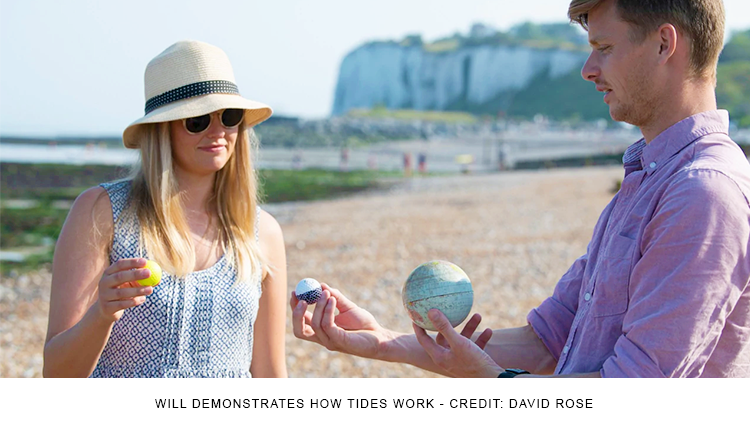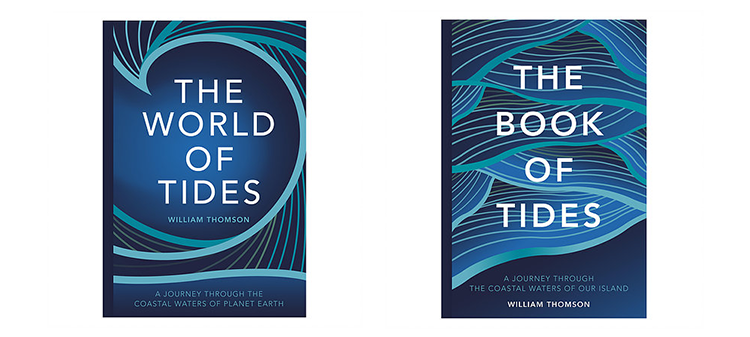The following article was published in the Telegraph on 10 August 2018I had only a dim awareness of the mysterious workings of the ocean – then I met
Will Thomson, who unkindly labels himself a “tidal bore”. Do you know the difference between spring and neap tides? Me neither. That is, until Thomson whipped a model globe and a few of his dad’s golf balls out of his bag to show me. Apparently, spring tides are stronger and more extreme, and occur when the sun and moon are in direct opposition to each other. A weaker, neap tide occurs when the sun and moon are at right angles.

Thomson, author of
The Book Of Tides, delivers his tide tutorial at Kingsdown beach in Kent: we amble companionably down the pebbly stretch as he explains what makes the tides tick. It’s fascinating: the moon pulls the water so that there is a never-ending flow of bulges. To demonstrate, Thomson lassoes a piece of rope to a sea-defence groyne and wiggles it up and down like a Mexican wave.
As we stroll, he points out the lines of flotsam and jetsam which mark how high the waves reach. Rock samphire only grows above the high-tide line, so if you find yourself cut off, but spot rock samphire, you should be safe. However, the presence of barnacles shows that the water reaches that point, so you’ll probably get soggy feet.
You can also impress friends with your maritime knowledge next time you’re at the beach by predicting the depth of the water – all you need to do is observe the waves. “They break when the water depth is 1.3 times the height of the wave,” says Thomson. So a one-metre wave breaks in 1.3 metres, a 10-metre wave in 13 metres of water, and so on.

Thomson tackles currents next: “You can spot the direction by looking at turbulence around stationary objects. Ships at anchor with anchor ropes tied to the bow will face into the current when there’s no wind, and you can see them swing on their anchor when currents change direction. The sea is smooth when wind and currents are blowing and flowing in the same direction, but it’s choppy when the current flows into the wind.”
Leaving the beach, I feel more confident in the ebb and flow of this previously inscrutable body of water. To help me along, Thomson recommends installing the Imray Tides Planner app for a visual view of tide levels, depths, sunrise and sunset times.
“People like the idea of waves flowing all around the world with high tide at their peaks and low tide at their troughs, converging like cogs,” laughs Thomson. “There’s a comforting simplicity.”
Learn more at
tidalcompass.com 